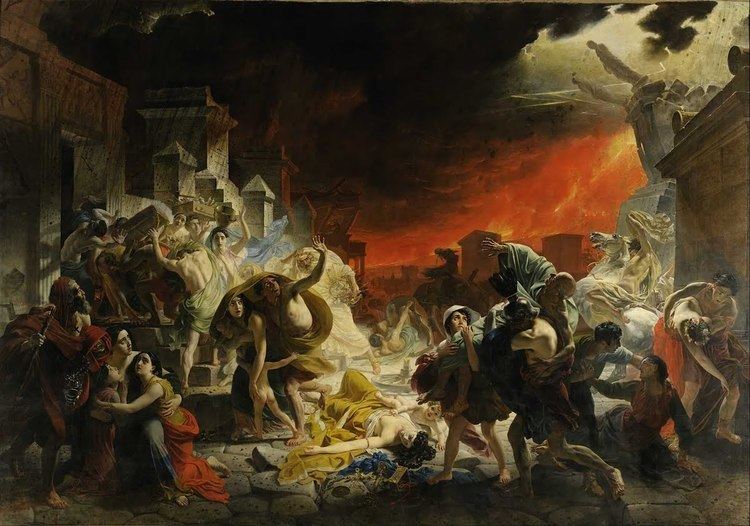Year 1830–1833 Location Russian Museum Period Romanticism Subject Pompei | Artist Karl Bryullov Medium Oil-on-canvas Genre History painting | |
 | ||
Dimensions 465.5 cm × 651 cm (183.3 in × 256 in) Similar The Rider, The Appearance of Christ, The Ninth Wave, Girl with Peaches, Barge Haulers on the Volga | ||
The last day of pompeii from the album painting through music
The Last Day of Pompeii is a large canvas painting by Russian artist Karl Bryullov in 1830-33.
Contents
- The last day of pompeii from the album painting through music
- Geography lesson the last day of pompeii
- Painting
- References
Geography lesson the last day of pompeii
Painting
Briullov visited the site of Pompeii in 1828, making numerous sketches depicting the Eruption of Mount Vesuvius in 79. The completed canvas was exhibited in Rome to rapturous reviews of critics and thereafter transported to Paris to be displayed in the Louvre. The first Russian artwork to cause such an interest abroad, it gave birth to an anthologic poem by Alexander Pushkin, and inspired the hugely successful novel The Last Days of Pompeii by Edward Bulwer-Lytton, who saw it in Rome. Another British author, Sir Walter Scott declared that it was not an ordinary painting but an epic in colours.
The topic is classical, but Bryullov's dramatic treatment and generous use of chiaroscuro render it farther advanced from the neoclassical style. In fact, The Last Day of Pompeii exemplifies many of the characteristics of Romanticism as it manifests itself in Russian art, including drama, realism tempered with idealism, increased interest in nature, and a zealous fondness for historical subjects.
The commissioner, Prince Anatole Demidov, donated the painting to Nicholas I of Russia who displayed it at the Imperial Academy of Arts for the instruction of young painters. To present the painting to a wider audience the canvas was transferred to the Russian Museum for the museum's opening in 1895.
Bryullov included a self-portrait in the upper left corner of the painting, under the steeple, one of the several foci in the picture, but not easy to identify.
